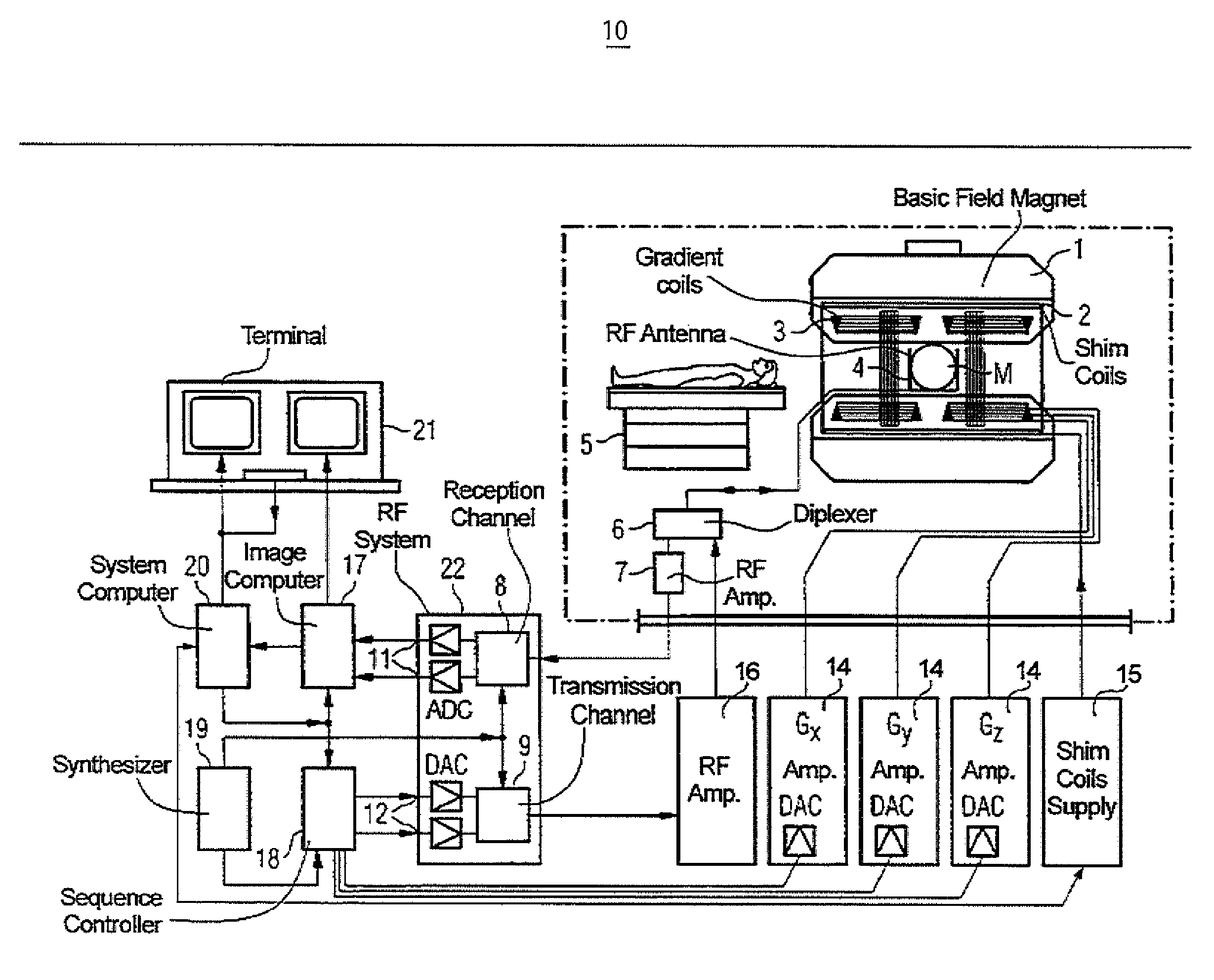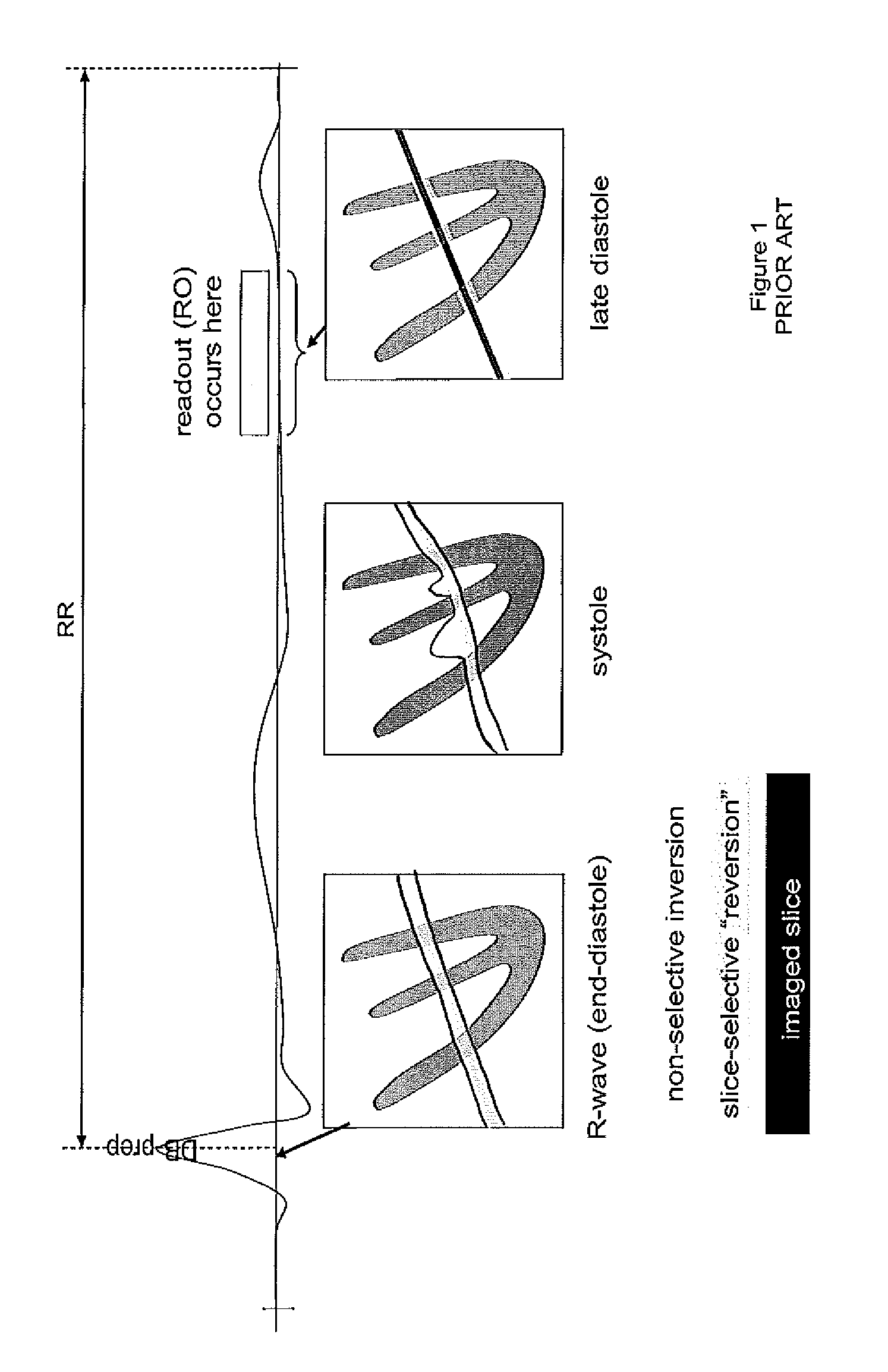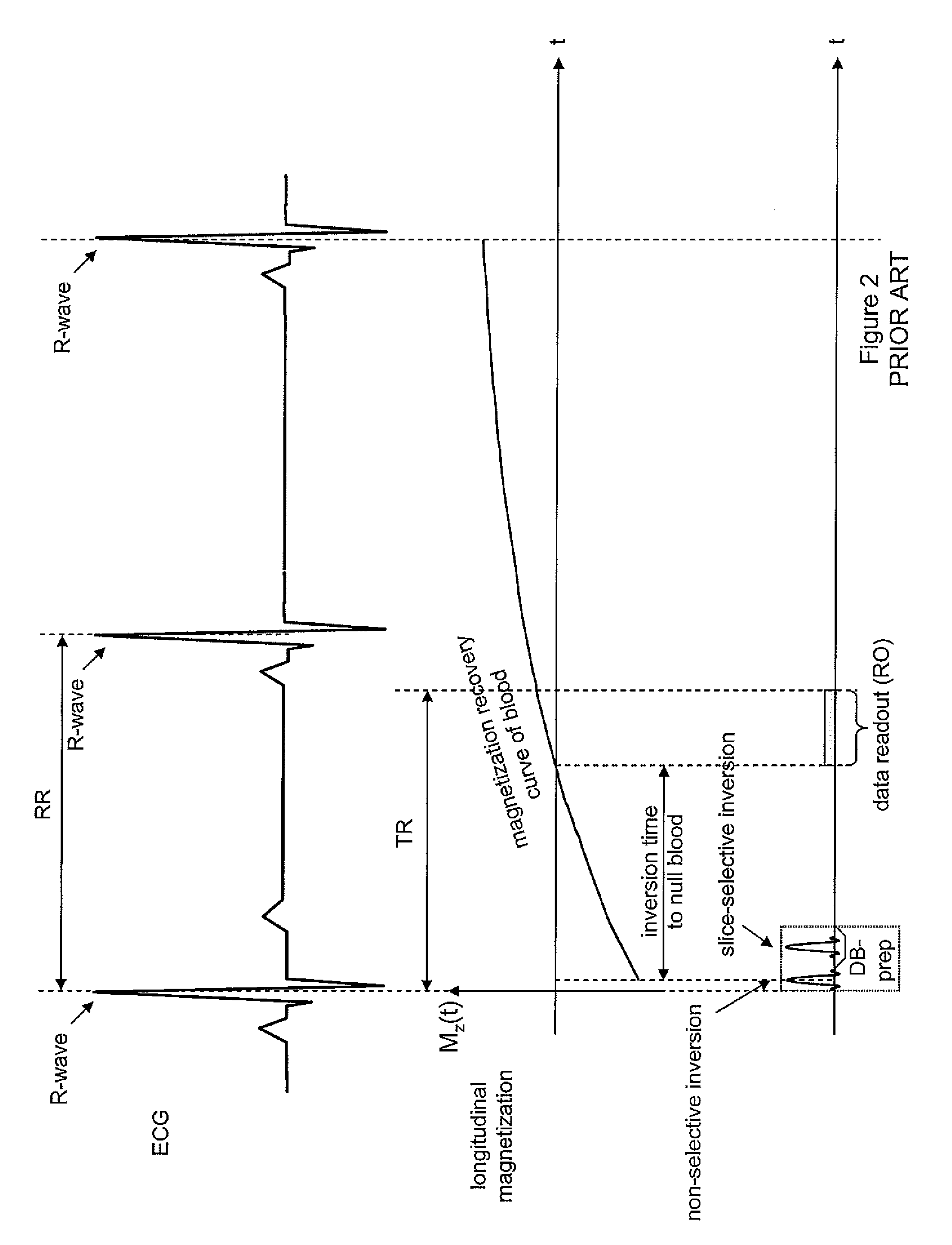System for automated parameter setting in cardiac magnetic resonance imaging
a technology of automatic parameter setting and which is applied in the field of system for automatic parameter setting in cardiac magnetic resonance imaging, can solve problems such as not being the case, and achieve the effect of improving image quality and simplifying the operation of pulse sequences
- Summary
- Abstract
- Description
- Claims
- Application Information
AI Technical Summary
Benefits of technology
Problems solved by technology
Method used
Image
Examples
Embodiment Construction
[0023]A cardiac Magnetic Resonance Imaging (MRI) system employs dark-blood (DB) and dark-blood inversion recovery (e.g., STIR (short tau inversion recovery)) pulse sequences. The system automatically calculates optimal protocol parameters including timing parameters, temporal resolution (also called shot time), dark blood thickness, and trigger pulse parameters for the pulse sequences as a function of patient heart rate simplifying operation of the pulse sequences by an MRI scanner operator and improving image quality for different heart rates. The inventors have advantageously recognized that significantly improved clinical results are achieved if the STIR is non-selective rather than a slice-selective STIR pulse. However, if a non-selective inversion is applied to a partially recovered blood pool magnetization, the timing for optimal blood signal reduction is more complex and not easily understood by a scanner operator. Finding the optimal timing as function of the heart rate is c...
PUM
 Login to View More
Login to View More Abstract
Description
Claims
Application Information
 Login to View More
Login to View More - R&D
- Intellectual Property
- Life Sciences
- Materials
- Tech Scout
- Unparalleled Data Quality
- Higher Quality Content
- 60% Fewer Hallucinations
Browse by: Latest US Patents, China's latest patents, Technical Efficacy Thesaurus, Application Domain, Technology Topic, Popular Technical Reports.
© 2025 PatSnap. All rights reserved.Legal|Privacy policy|Modern Slavery Act Transparency Statement|Sitemap|About US| Contact US: help@patsnap.com



